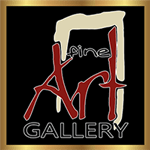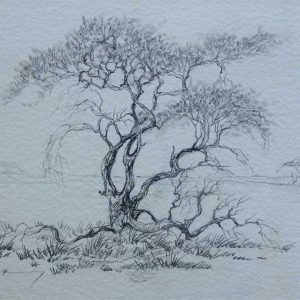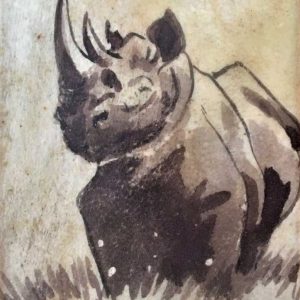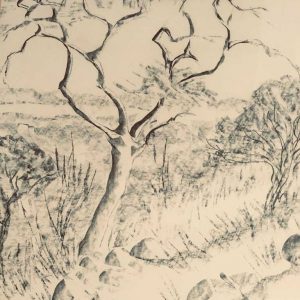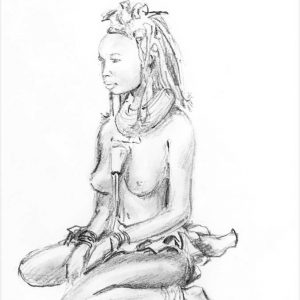
Dieter Aschenborn
About the Artist
Dieter Aschenborn
1915 – Born in Okahandja, Namibia
2002 – Died in Windhoek, Namibia
Worked in charcoal, pastel, ink, watercolor, oil, wood cuts, renowned for his works on parchment on kudu skin and carvings on leather; subject matters: mainly wildlife but also landscapes
The Aschenborn family moved to Stellenbosch in 1920 and returned to Kiel in 1921, where Dieter grew up and where he had his first art lessons by his father. The family returned to South Africa shortly after Hans Aschenborns early death in 1934.
Shortly after finishing his school, he was in several concentration camps throughout South Africa during WWII for six years. It was here where Aschenborn´s artistic career started.
His first carvings have been produced in a Johannesburg joinery, where he was employed. Soon the organizers of the Van Riebeek Festival noticed his extraordinary talent and gave him the order to organize the stall for South – West African Art at the festival. Carvings, preferable in dolf wood have been his passion.
His intimate knowledge about the wildlife Aschenborn obtained in his years when he became the first game warden of the Etosha National Park in 1953. – Later he settled on a farm in the Outjo District and worked as a representative for a veterinary medicine company. When his children enrolled at school, he and his wife took over the management of the hostel in Otjiwarongo.
He served as engineer of a construction company in the measurement of the Hardap – dam as well and worked as a guide for a safari company to the skeleton coast and Kaokoveld.
In 1963 he moved to Windhoek and became a full-time artist in his studio. He illustrated the first Bushmen school book.
He designed some series of stamps in 1967.
PUBLICATIONS:
Designed postal stamps in 1967. Illustrations 1966 Map of South West Africa as well as illustrations for school books in 1969.
1989 Dieter Aschenborn – Animals and Trees of South West Africa
Solo – Exhibitions:
Participated in group exhibition’s in Namibia and Germany. Often joint exhibitions with all three Aschenborns in Namibia. 2009 joint exhibition “ Nudes “ with Ulrich Aschenborn and Bridget Allan at Fine Art Gallery in Swakopmund. First solo exhibition in 1948 in Potgietersrust, South Africa
1984 E. Schweickerdt Gallery, Pretoria, RSA 1985 Art Association Swakopmund 1995 Atelier Kendzia, Windhoek 2000 Atelier Kendzia, Windhoek
Public Commissions:
1952 Wood Carvings, Odeon Film Theatre, Windhoek 1964 Leather Painting, General Motors, Port Elizabeth 1965 Wood Carvings, Municipality Building Windhoek
Public Collections:
Namibia: Permanent Collection, National Art Gallery Namibia Murals and interior design for public buildings (schools, hostels, hotels ) in Namibia South Africa: War Museum of the Boer Republic, Bloomfontein

